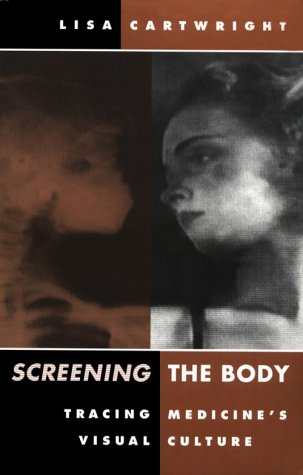Moving images are used as diagnostic tools and locational devices every day in hospitals, clinics and laboratories. But how and when did such issues come to be established and accepted sources of knowledge about the body in medical culture? How are the specialized techniques and codes of these imaging techniques determined, and whose bodies are studied, diagnosed and treated with the help of optical recording devices? "Screening the Body" traces the unusual history of scientific film during the late 19th and early 20th centuries, presenting material that is at once disturbing and engrossing. Lisa Cartwright looks at films like "The Elephant Electrocution". She brings to light eccentric figures in the history of the science film such as William P. Spratling who used Biograph equipment and crews to film epileptic seizures, and Thomas Edison's lab assistants who performed x-ray experiments on their own bodies.
Drawing on feminist film theory, cultural studies, the history of film, and the writings of Foucault, Lisa Cartwright illustrates how this scientific cinema was a part of a broader tendency in society toward the technological surveillance, management, and physical transformation of the individual body and the social body. She frequently points out the similarities of scientific film to works of avant-garde cinema, revealing historical ties among the science film, popular media culture and elite modernist art and film practices. Ultimately, Cartwright unveils an area of film culture that has rarely been discussed, but which will leave readers scouring video libraries in search of the films she describes.
- ISBN10 0816622892
- ISBN13 9780816622894
- Publish Date 9 March 1995 (first published 1 January 1995)
- Publish Status Out of Print
- Out of Print 10 July 2008
- Publish Country US
- Imprint University of Minnesota Press
- Format Hardcover
- Pages 224
- Language English
